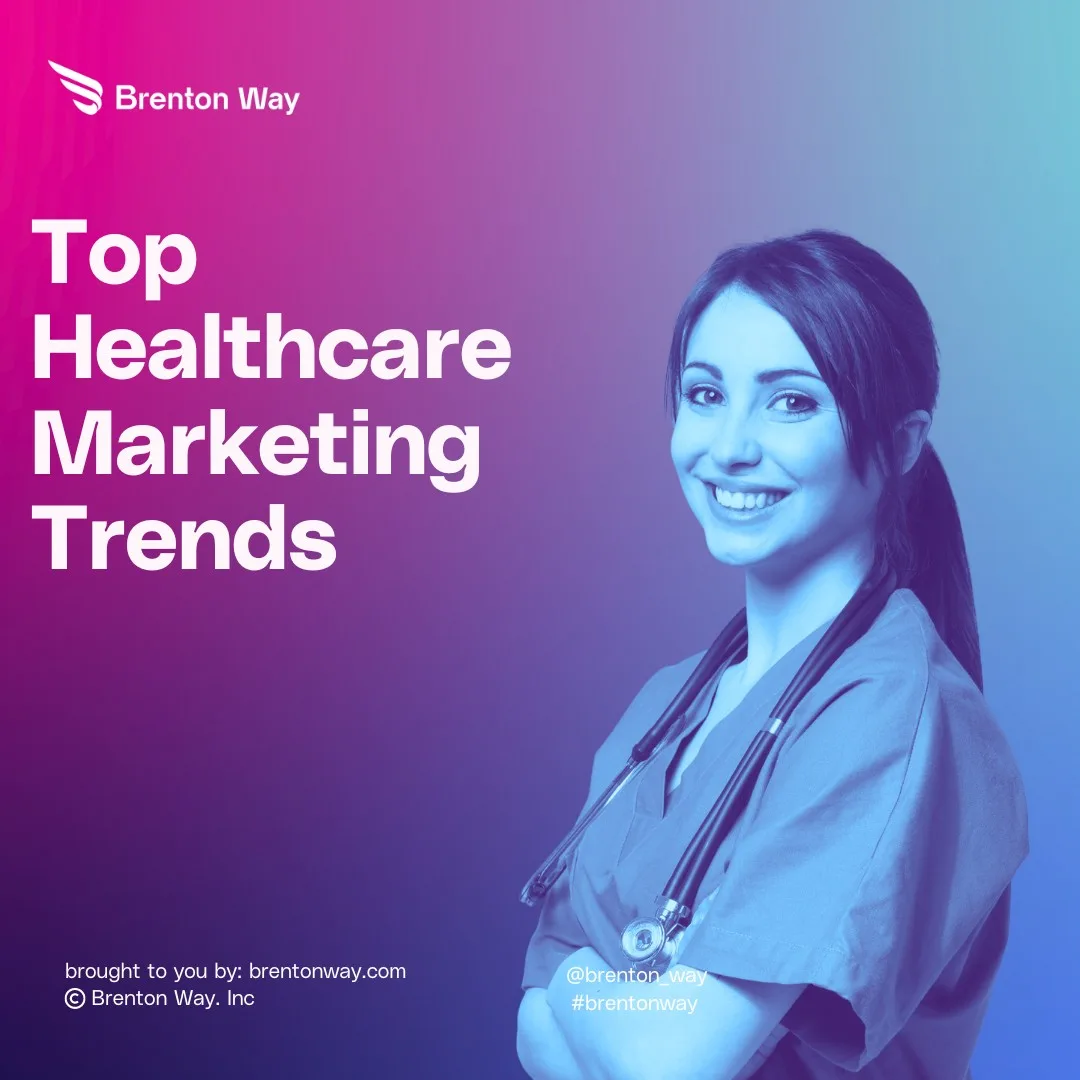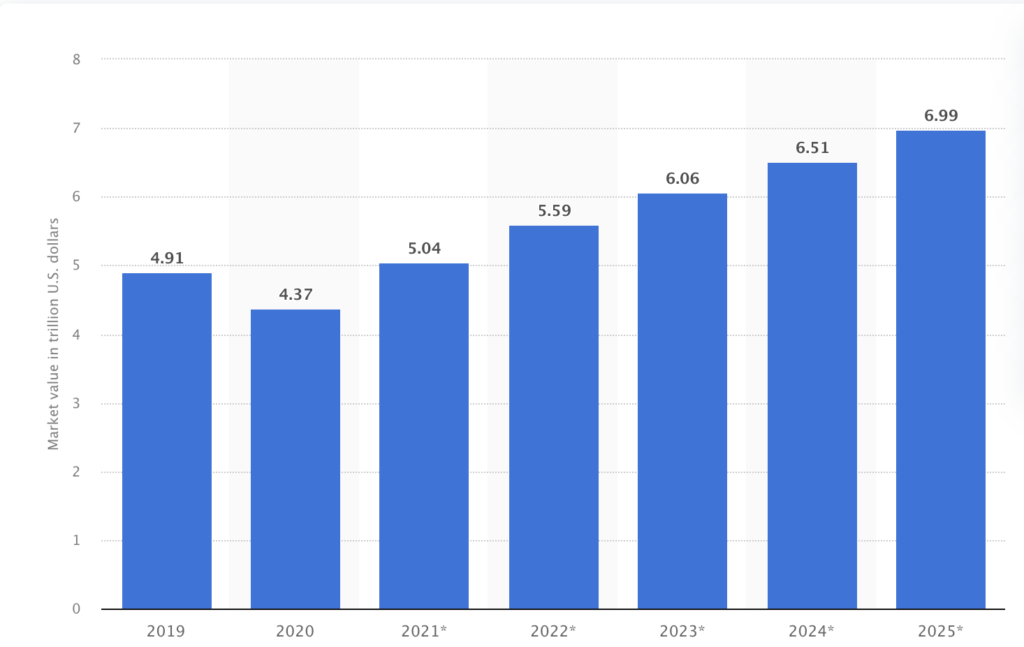
The healthcare marketing landscape is undergoing a significant transformation, largely under the influence of HIPAA regulations. From integrating cutting-edge technologies to an increased emphasis on patient-centric approaches, healthcare marketing trends promise to revolutionize how medical organizations communicate and engage with their target audience. Discover the biggest and latest medical and wellness marketing trends that will […]

The healthcare marketing landscape is undergoing a significant transformation, largely under the influence of HIPAA regulations.
From integrating cutting-edge technologies to an increased emphasis on patient-centric approaches, healthcare marketing trends promise to revolutionize how medical organizations communicate and engage with their target audience.
Discover the biggest and latest medical and wellness marketing trends that will help hospitals, pharmaceutical companies, healthcare organizations, and medical professionals prepare a healthcare advertising plan to connect with patients.
In 2020, the global wellness market reached a valuation of 4.37 trillion U.S. dollars, and it is anticipated to expand to nearly seven trillion U.S. dollars by the year 2025.

Over 71% of healthcare consumers ran a search about the hospital, nursing home, and medical practitioner’s before scheduling an appointment.

Salesforce research suggests that 83% of healthcare consumers agree that experience with the healthcare service provider is as important as their products or services.

The Health Insurance Portability and Accountability Act (HIPAA) significantly impacts how digital marketing is conducted in the healthcare industry.
HIPAA sets strict regulations to protect the privacy and security of individuals’ health
information, known as Protected Health Information (PHI).
Here’s how HIPAA influences digital marketing in the healthcare sector:
Tailoring advertising content to individual preferences and needs is becoming increasingly vital.
Advanced data analytics and artificial intelligence are empowering healthcare marketers to create personalized healthcare content marketing campaigns based on the needs of diverse target audiences.
Oscar Health exemplifies the power of personalized healthcare advertising through its adept use of advanced data analytics and artificial intelligence. By scrutinizing individual health profiles, the company tailors plans to meet the needs of each policyholder.

Utilizing AI-driven initiatives, Oscar Health identifies potential health risks and crafts
personalized wellness programs, fostering healthier lifestyles among its members.
The surge in telehealth services has opened new avenues for advertising. Expect innovative campaigns highlighting the convenience and accessibility of virtual healthcare consultations.
Telehealth advertising is set to become a prominent player in healthcare marketing strategies.
Teladoc Health is a prime example of a company navigating the telehealth boom with innovative advertising strategies. Through compelling campaigns, they spotlight the simplicity and accessibility of virtual healthcare consultations.
Teladoc Health’s user-friendly interface enhances the convenience of scheduling and attending virtual visits, emphasizing a seamless experience. Moreover, the company broadens its appeal by promoting various telehealth services, positioning itself as a versatile and indispensable player in the evolving landscape of healthcare marketing.

In 2024, healthcare advertising will seek to promote services and prioritize educating patients.
Expect campaigns that aim to enhance health literacy, providing valuable information to empower individuals in managing their well-being.
Mayo Clinic is a prominent brand embracing the evolving landscape of healthcare advertising in 2024. Beyond mere service promotion, Mayo Clinic prioritizes patient education in its campaigns. With a focus on enhancing health literacy, the clinic delivers valuable information to empower individuals in effectively managing their well-being.
Through informative content, targeted health literacy campaigns, community outreach, and extensive online resources, Mayo Clinic exemplifies a commitment to educating patients and fostering a proactive approach to health.
Traditional advertising methods are giving way to more interactive and immersive content experiences. Augmented reality (AR) and virtual reality (VR) will likely be incorporated into healthcare campaigns, offering engaging and memorable interactions for audiences.
An illustrative example of a brand embracing the shift towards interactive and immersive healthcare advertising is Johnson & Johnson. In their campaigns, the company has started integrating AR and VR to provide audiences with captivating and memorable experiences.

Whether it’s virtual product demonstrations, 3D visualizations of medical procedures, or interactive health education modules, Johnson & Johnson’s forward-thinking approach reflects the growing trend of incorporating cutting-edge technologies for enhanced audience engagement in healthcare marketing.
Leveraging influencers in healthcare advertising is gaining traction. Collaborations with medical professionals, health advocates, and influencers who align with healthcare values will amplify messages and foster trust among diverse audiences.
An exemplary brand navigating the trend of influencer marketing in healthcare is Fitbit. Recognizing the power of influencers in promoting health and wellness, Fitbit frequently collaborates with fitness enthusiasts, healthcare professionals, and wellness advocates.

By aligning with influencers who share their commitment to health-conscious living, Fitbit leverages its reach and credibility to amplify messages and foster trust among diverse audiences.
The digital realm remains a primary arena for healthcare advertising. From social media platforms to targeted online campaigns, healthcare organizations will continue to leverage digital channels to reach and engage their audiences effectively.
An excellent illustration of a brand harnessing the power of the digital realm in healthcare advertising is Zocdoc. Specializing in online medical appointment booking, Zocdoc effectively utilizes targeted online campaigns, search engine optimization, and social media marketing to connect with its audience.
Through digital channels, Zocdoc facilitates easy access to healthcare services and engages users with informative content, such as health tips and insights. This digital-first approach streamlines the appointment-booking process and positions Zocdoc as a convenient and reliable resource in the vast landscape of online healthcare services.
A distinctive trend involves using virtual reality to create immersive patient experiences. Medical marketers are exploring VR to offer virtual tours of healthcare facilities, simulate medical procedures, and enhance patient education innovatively and engagingly.
Cedars-Sinai Medical Center is a notable example of a brand leveraging virtual reality (VR) for immersive patient experiences. In their blog, they discussed how VR technology can be used effectively for pain management.

Also, through VR, Cedars-Sinai offers virtual tours of their medical facilities, providing prospective patients with an immersive and detailed view of the hospital environment. This familiarizes individuals with the physical layout and helps alleviate potential anxieties associated with hospital visits.
Some medical marketing strategies incorporate gamification elements to promote health and wellness. Interactive games and challenges encourage audience participation, making health-related information more enjoyable and memorable.
While not a traditional healthcare brand, Zombies Run demonstrates how gamification can promote health and wellness. The app uniquely engages users by making exercise enjoyable through interactive challenges and storytelling, making health-related activities more memorable and encouraging regular physical activity. This approach showcases the potential of gamification in the broader context of promoting healthy behaviors and wellness.

Unique to medical marketing is the integration of interactive chatbots that provide real-time engagement and support to patients. These AI-driven chatbots assist with appointment scheduling, answer basic medical queries, and offer personalized health tips.
Babylon’s chatbot, known as “Babylon Chat,” is a virtual health assistant. It assists users in scheduling appointments, provides information about common medical conditions, and offers personalized health advice based on user input. The chatbot engages with users in real-time, creating an interactive and user-friendly experience.

A novel approach involves incorporating blockchain technology in medical marketing for enhanced security and transparency. This can be particularly relevant in campaigns related to data privacy, medical research, and pharmaceutical supply chain communication.
Ochsner Health’s branding exemplifies a contemporary and patient-centric approach to healthcare marketing. Through personalized patient stories, active promotion of telehealth services, community wellness initiatives, and a commitment to digital accessibility, Ochsner Health distinguishes itself as a forward-thinking healthcare provider.
By promoting health literacy and engaging in initiatives beyond clinical services, the brand communicates transparency, trust, and a dedication to holistic well-being. Ochsner Health’s branding strategy not only adapts to modern healthcare trends but also resonates with diverse audiences, portraying a healthcare organization deeply rooted in the well-being of its patients and community.
Some medical marketers focus on building niche communities around specific health conditions or patient demographics. This approach fosters a sense of belonging and facilitates targeted communication tailored to the unique needs of these communities.
MyFitnessPal allows users to join specialized groups or forums tailored to specific health conditions, fitness levels, or dietary preferences. For instance, there are dedicated communities for individuals managing diabetes, pursuing weight loss, or practicing vegetarianism. These niche communities provide a platform for users to share experiences, seek advice, and connect with others facing similar health challenges.

In medical education within marketing, augmented reality is employed to provide students, professionals, and the general public with interactive and detailed views of anatomical structures, medical procedures, and treatment options.
ZSpace’s AR technology enables students, healthcare professionals, and the general public to interact with three-dimensional anatomical structures, observe medical procedures, and explore detailed visualizations of various medical concepts. By immersing users in an interactive and lifelike AR environment, ZSpace enhances the learning experience, allowing for a more thorough understanding of complex medical subjects.
With the rise of voice-activated devices, medical marketers are optimizing content for voice searches. This involves creating content that aligns with natural language queries, making healthcare information more accessible through voice-activated assistants.
Atrium Health has adapted its online content to cater to voice searches, allowing users to inquire about medical conditions, treatment options, and general health advice through natural language queries. This approach enhances the accessibility of healthcare information, particularly for individuals who prefer hands-free interactions with their devices.
The global telehealth market is experiencing substantial growth, with a projected annual growth rate of 24.0% from 2023 to 2030.
(Source: Grand View Research)
(Source: MHealthIntelligence)
Here are the top healthcare ecommerce trends for 2024 and ahead:
The convergence of advanced technologies, a deeper understanding of patient needs, and an evolving digital landscape present unprecedented opportunities for healthcare marketers.
By embracing these healthcare and wellness marketing trends, organizations can elevate their brand presence and, more importantly, contribute to improved patient outcomes and experiences.
The year ahead promises a more connected, patient-centric, and technologically empowered healthcare marketing sphere, where innovation drives meaningful engagement and lasting impact.


